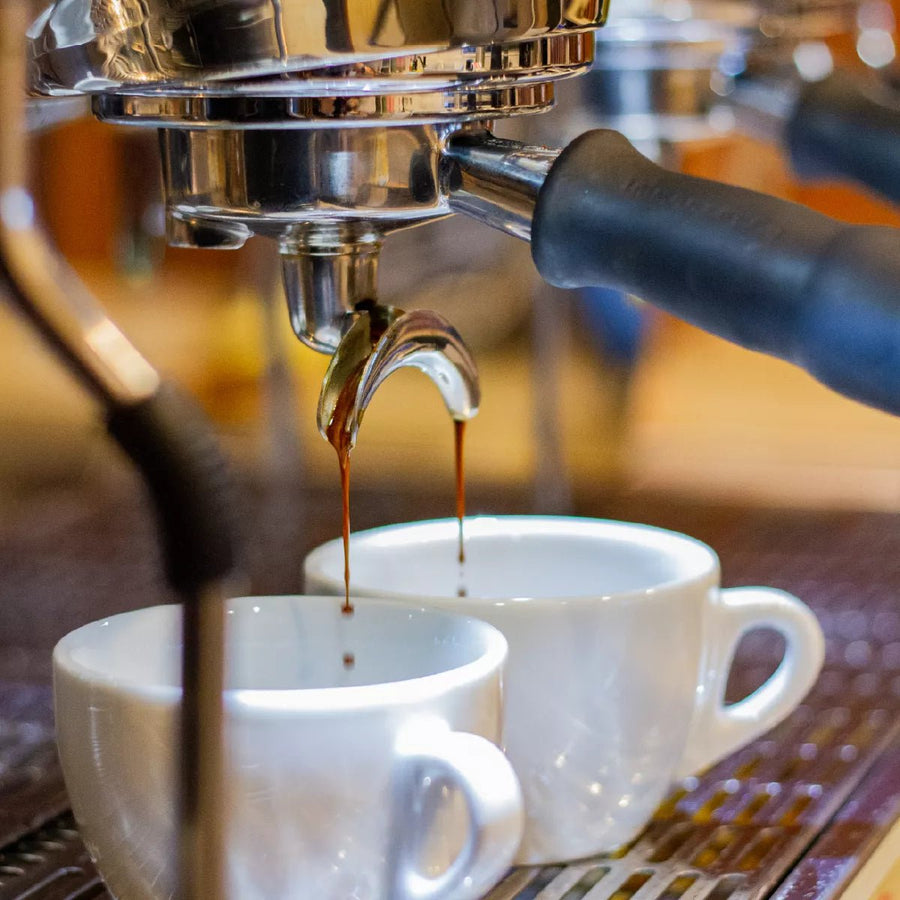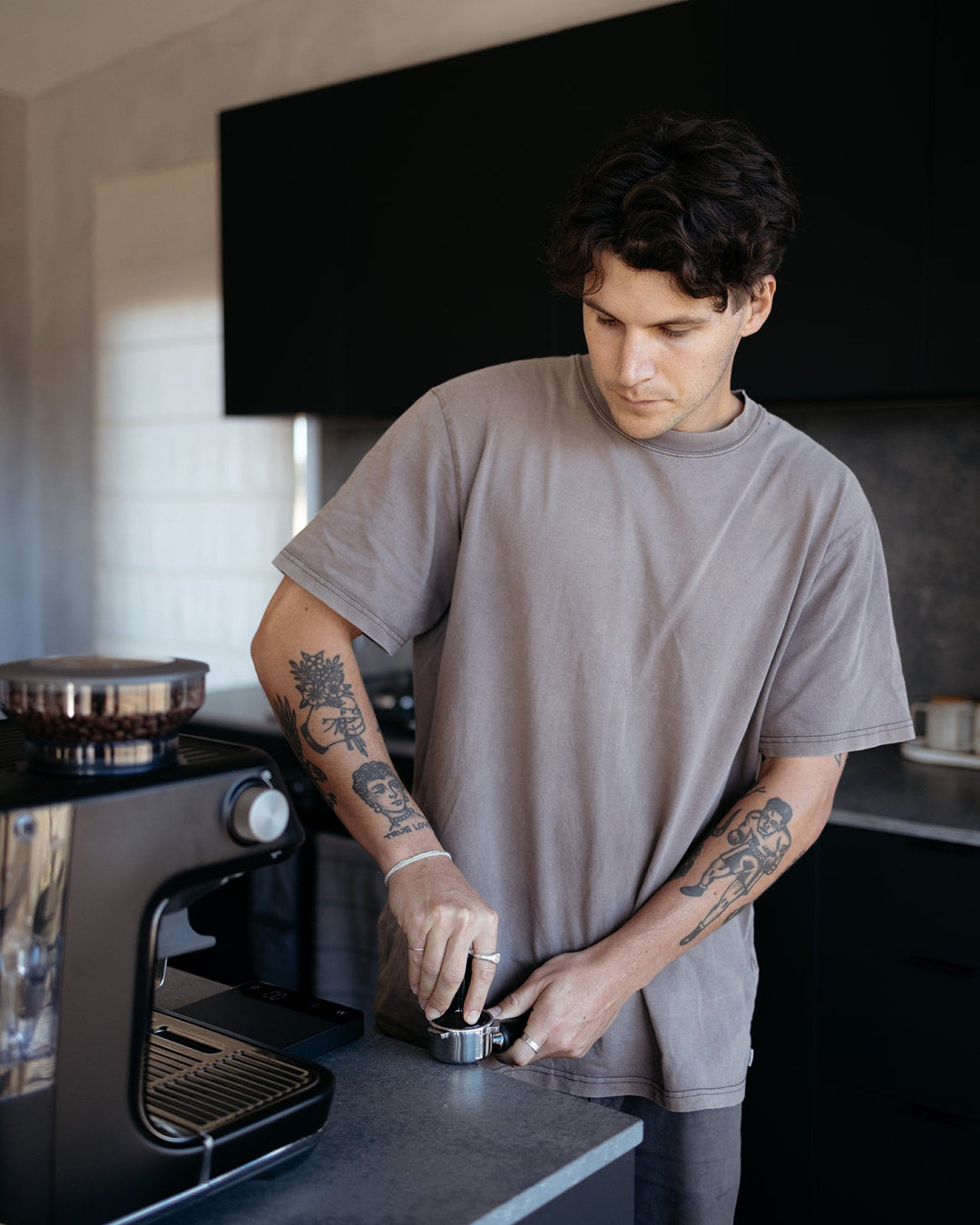Coffee Beans 101: Every Little Thing You Required to Learn About Coffee and Blended Coffee Beans
When it involves coffee, recognizing the nuances of coffee and mixed beans can change your daily cup. You'll uncover the distinct features of Arabica and Robusta beans, and exactly how each effects flavor and high levels of caffeine web content. From the expanding process to roasting techniques, every step plays a function in your coffee experience. What makes the best mixture? Let's check out the vital elements that add to an exceptional mug of coffee.
Comprehending Coffee Beans: Types and Ranges
When diving into the world of coffee, recognizing the types and selections of coffee beans is important for every enthusiast. You'll largely run into two primary types: Arabica and Robusta. Arabica beans are recognized for their smooth, complex tastes and reduced high levels of caffeine web content, making them a favorite among coffee connoisseurs. On the other hand, Robusta beans load a punch with a stronger, much more bitter taste and greater high levels of caffeine levels, frequently utilized in espresso blends.
Within these species, you'll locate numerous regional varieties, each bringing unique qualities. Ethiopian Yirgacheffe uses brilliant floral notes, while Colombian beans supply a healthy flavor profile. As you explore, remember to take note of handling approaches like cleaned or all-natural, as they can significantly influence the last taste. By familiarizing yourself with these beans and their flavors, you'll elevate your coffee experience and make more educated choices in your brewing trip.
The Growing Refine: From Seed to Bean
When you discover the trip of coffee, all of it begins with seed option strategies that establish the foundation for high quality. From there, cultivation and gathering play essential roles in guaranteeing the beans thrive. Handling methods transform those collected cherries into the coffee beans you love.
Seed Choice Techniques
Choosing the ideal seeds is important for creating top quality coffee beans, as it lays the structure for the whole expanding procedure. Pay focus to the seed's age and storage conditions, as fresh seeds have a tendency to sprout far better. Think about the disease resistance of various ranges, as this can significantly impact your return.
Farming and Harvesting
As you support your coffee seeds into prospering plants, comprehending the cultivation and harvesting procedure is vital for accomplishing the best taste and top quality. Start by planting your seeds in well-draining dirt, ideally in a shaded location to shield them from direct sunlight.
When it comes time to harvest, look for ripe cherries, which generally transform a dynamic red. Hand-picking is usually the very best technique to assure only the ripest cherries are picked. Timing is important; harvesting also late or too very early can influence the flavor profile of your beans. Embrace perseverance and care, as this is where high quality begins.

Handling Methods Explained
Once you've gathered your coffee cherries, the next important step is refining them to transform those dynamic fruits right into the beans you'll brew. In the completely dry procedure, you spread the cherries out in the sunlight to dry, permitting the fruit to ferment and pass on one-of-a-kind flavors to the beans. Understanding these approaches is crucial to enjoying your coffee experience.
Roasting Methods: How Flavor Is Created
When it pertains to toasting coffee beans, comprehending roast degrees is crucial to revealing their one-of-a-kind flavors. Each roasting method influences the scent and enhances the flavor development procedure, offering you a richer coffee experience. Let's explore how these elements come together to raise your day-to-day brew.
Roast Degrees Described
Roast degrees play a vital duty in forming the taste profile of your coffee. By comprehending these degrees, you can better pick a coffee that matches your preference preferences. Experiment with various roasts to discover which one reverberates with you, improving your total coffee experience and satisfaction.
Influence on Aroma
The roast degree not only affects the taste of your coffee however additionally significantly impacts its aroma. When you choose a light roast, you'll often notice brilliant, floral notes that can make your coffee scent vivid and fresh. As the beans dim, the fragrance shifts; a tool roast highlights more well balanced, caramelized aromas, while a dark roast tends to include strong, great smoky undertones. Each roasting method launches various unpredictable compounds, shaping exactly how your coffee scents. Furthermore, the quality of the beans plays a critical role; freshly baked coffee releases a lot more aromatic oils, boosting that luring scent. Pay focus to the roast degree-- it's essential to exposing the full aromatic experience of your brew.
Flavor Development Refine
As you discover the taste growth procedure, you'll uncover that roasting methods play a vital function fit the preference account of your coffee. The toasting temperature level and time directly affect the acidity, sweetness, and bitterness of the beans. Light roasts retain more of the bean's initial flavors, highlighting floral and fruity notes. Medium roasts balance acidity and body, supplying an all-around taste. Dark roasts, on the various other hand, highlight strong, smoky characteristics while lessening the bean's integral high qualities. During toasting, chemical responses, like the Maillard response and caramelization, transform the beans and boost their intricacy. Trying out with various roasting levels can aid you locate your ideal mixture, so do not hesitate to taste and uncover the rich range of tastes!
Espresso vs. Blended Coffee: Key Distinctions
Coffee and blended coffee each offer special experiences that deal with various tastes and choices. Coffee is a concentrated coffee made forcibly warm water with finely-ground coffee beans, leading to a rich, strong taste and a creamy layer of crema on top. It's usually taken pleasure in as a shot or made use of as a base for drinks like coffees and lattes.
On the various other hand, blended coffee incorporates different beans from different areas, creating a much more balanced taste profile. You'll typically find blends that highlight level of acidity, sweet taste, or body, making them versatile for various developing methods. While espresso concentrates on intensity, mixed coffee may supply a broader series of tastes that can change with each sip.
Inevitably, your selection in between coffee and mixed coffee boils down to your individual choice. Whether you crave a leisurely mug or a fast jolt, both choices have something delicious to provide.

Brewing Methods: Unlocking the Perfect Cup
When it comes to brewing coffee, discovering the right technique can change your experience and raise your mug. Each brewing method has its one-of-a-kind beauty and can considerably impact your coffee's flavor and fragrance. Utilizing a French press permits you to take pleasure in a abundant and robust mixture, while a pour-over method supplies a tidy, intense mug with unique flavors.
If you choose coffee, spending in a high quality maker can assist you understand the art of pulling shots. Conversely, for ease, a single-serve capsule system uses rate without compromising preference.
Don't forget chilly mixture, which provides a smooth, less acidic coffee ideal for hot days. Experiment with different methods to discover what resonates with your taste buds. Each developing strategy opens a new globe of opportunities, so take the time to discover and find your perfect cup. Pleased brewing!
Tasting Notes: Identifying Flavor Profiles
Just how can you genuinely value your coffee if you do not understand what tastes to look for? Sampling notes are your guide to recognizing the complicated world of coffee. Some coffees might leave a chocolatey or sugar aftertaste, while others might have an intense, tidy surface.
Consider the body of the coffee, too; is it light and ventilated or thick and syrupy? Don't neglect acidity; a brilliant level of acidity can include sprightliness, while a low level of acidity may provide a smoother experience. By determining these flavor profiles, you'll deepen your connection with each cup, making coffee sampling a wonderful trip of discovery.

Tips for Choose and Keeping Coffee Beans
Picking and keeping coffee beans appropriately can substantially enhance your developing experience. Start by selecting top quality beans that suit your preference. Try to find freshness; beans roasted within the last two weeks are perfect. Examine the roast date on the product packaging, and purchase from local shops or respectable roasters.
Once you have your beans, store them in a closed container to stop exposure to light, moisture, and air. A dark, trendy location functions best, so prevent maintaining them in the refrigerator or fridge freezer, as this can introduce wetness. Only grind the quantity you need to preserve quality; whole beans keep flavor longer than pre-ground coffee.
Finally, attempt to use your beans within two to 4 weeks after opening for peak taste. Adhering to these tips will ensure your coffee stays pleasurable and tasty, boosting your daily brew to brand-new elevations.
Frequently Asked Concerns
For How Long Do Coffee Beans Remain Fresh After Toasting?
Coffee beans remain fresh for about two weeks after toasting - SOE. You should store them in an airtight container, away from light and wetness. After that, their flavor and scent start to lessen significantly

Can I Mix Different Coffee Bean Varieties?
Absolutely, you can blend various coffee bean ranges! Experimenting with blends can boost flavors and produce a distinct taste profile. Simply make certain to stabilize the toughness and characteristics of each variety for the very best outcomes.
What Is the Suitable Work Size for Coffee?
For coffee, you'll desire a great grind size, about the texture of salt. This allows optimal removal, causing a rich, savory shot. Experiment a little bit to locate what fits your taste best!
How Does Altitude Affect Coffee Bean Taste?
Altitude impacts coffee bean flavor by affecting the growth rate and chemical composition. Higher elevations bring about slower growth, which enhances acidity and intricacy, offering your coffee a special and dynamic taste you will not neglect.
Exist Decaffeinated Versions of Coffee Beans?
Yes, there are decaffeinated variations of espresso beans. You can enjoy an abundant espresso taste without the caffeine kick. Simply seek "decaf" blends at your neighborhood coffeehouse or specialty store.
Coffee Beans 101: Every Little Thing You Need to Know About Espresso and Blended Coffee Beans.
When diving into the globe of coffee, understanding the kinds and varieties of coffee beans is crucial for every fanatic.When it comes to toasting coffee beans, understanding roast levels is key to disclosing their unique tastes. Espresso is a concentrated coffee brewed by compeling warm water with finely-ground SOE coffee beans, resulting in a rich, bold flavor and a velvety layer of crema on top.On the various other hand, blended coffee integrates various beans from different regions, producing a more balanced flavor profile.